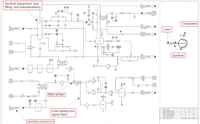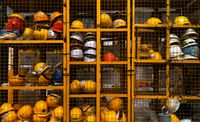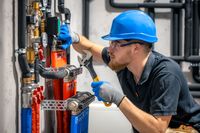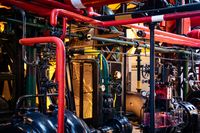Project Engineering & Machinery Management
1. Project Planning & Management
- Compliance with industry standards (API, ASME, ANSI, ISO, OSHA, IEC, NFPA)
- Project scope alignment with business and regulatory objectives
- Risk assessment and HAZID/HAZOP studies
- Project execution schedule (EPC phases: Engineering, Procurement, Construction)
- Change management and impact assessments
- Stakeholder engagement and communication (internal & external)
- Cost control and financial audits
2. Engineering Design & Technical Compliance
- Process flow diagrams (PFDs) and piping & instrumentation diagrams (P&IDs) accuracy
- Design compliance with API, ASME, IEC, and ISO standards
- Material selection for high-pressure, high-temperature (HPHT) environments
- Pipeline integrity and corrosion control strategies
- Structural engineering compliance (offshore & onshore facilities)
- Instrumentation and control system integration checks
- Hazardous area classification and explosion-proof equipment review
3. Procurement & Vendor Management
- Supplier qualification and approval process
- Compliance of procured materials with project specifications
- Traceability of critical equipment (valves, pumps, compressors, turbines)
- Non-conformance reporting (NCR) and corrective action tracking
- Inspection and testing of critical components before shipment
- Logistics and transportation compliance (handling of hazardous materials)
4. Construction, Fabrication & Installation
- Compliance with welding procedures (WPS, PQR) and welder qualifications
- Adherence to non-destructive testing (NDT) procedures (X-ray, UT, MPI)
- Pipeline installation checks (hydrostatic testing, pigging)
- Offshore platform or refinery module integration audits
- Proper foundation and structural load testing
- Safety in lifting and heavy equipment operations
5. Health, Safety & Environment (HSE) Compliance
- Alignment with OSHA, HSE, API RP 75, and local safety regulations
- Implementation of Job Hazard Analysis (JHA) and Permit to Work (PTW) system
- Fire protection and explosion mitigation (NFPA 30, API 2218 compliance)
- Personal Protective Equipment (PPE) adequacy and compliance
- Emergency response preparedness and drills
- Environmental impact assessments (EIA) and mitigation strategies
- Waste management and hazardous material handling
6. Quality Assurance & Quality Control (QA/QC)
- Adherence to quality control plans (QCP) and Inspection Test Plans (ITP)
- Documentation and traceability of welding, coatings, and NDT results
- Factory Acceptance Testing (FAT) for critical components
- Site Acceptance Testing (SAT) and performance verification
- Root cause analysis for deviations and corrective action plans
- Compliance with ISO 9001 Quality Management System
7. Commissioning & Startup Readiness
- System pre-commissioning checks (leak tests, flushing, purging)
- Functionality verification of process control systems (DCS, SCADA, SIS)
- Pressure testing of pipelines, vessels, and storage tanks
- Calibration and testing of instruments and metering systems
- Emergency shutdown system (ESD) and fire suppression system validation
- Handover and punch list clearance procedures
8. Asset Integrity & Operational Readiness
- Long-term pipeline and equipment integrity management plans
- Compliance with API 570 (Piping Inspection), API 653 (Tank Inspection)
- Vibration analysis and predictive maintenance strategies
- Corrosion monitoring and cathodic protection effectiveness
- Operator training and competency assessments
- Preventive maintenance scheduling and CMMS integration







